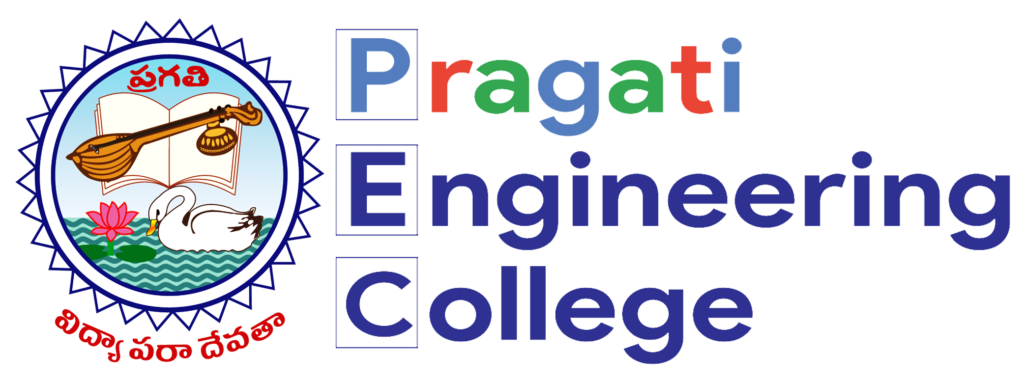ELECTRICAL & ELECTRONICS ENGINEERING
- About-EEE-Department
- Vision & Mission
- Under Graduate Programmes
- Post Graduate Programmes
- Infrastructure
- Board of Studies
- Staff
- Academic Information
- Department Committees
- Professional Societies & Activities
- Student Association Activities
- Faculty Achievements
- Student Achievements
- Research, Development & Consultancy
- Internships & Industrial Training
- Academic Toppers
- Innovation in Teaching & Learning
- Digital Library
- News Letters / Tech Magazine
- Placements, Higher Studies & Entrepreneurship
- Distinguished Alumni
- Gallery
Innovation Teaching & Learning Methods
To enhance the learning experience of the students and for their active involvement in class activities, Department of Electrical And Electronics Engineering has adopted some methodologies which are listed below:
- Power point presentation
- Chalk and talk
- YouTube video
- Picture based learning
- Demonstration
- Industrial visits
- Seminars
- Workshops
- Power point presentation:
Dual converter its mode of operation
A dual converter is a type of power electronic converter that uses two converters, typically two three-phase bridges, to achieve bidirectional power flow and voltage conversion. The mode of operation of a dual converter can be explained as follows:
Operation Modes:
- Rectifier Mode: Converter 1 acts as a rectifier, converting AC power from the grid to DC power, while Converter 2 is in a freewheeling state.
- Inverter Mode: Converter 2 acts as an inverter, converting DC power to AC power, while Converter 1 is in a freewheeling state.
- Bypass Mode: Both converters are in a freewheeling state, allowing the grid to supply power directly to the load.
- Chalk and talk:
Control Systems: By using chalk and talk we are explain in detail about theRouth’s stability criterion in mathematical modeling analysis of control systems it was very helpful to the students to understanding the concept easy way.
- YouTube video:
SWITCHGEAR & PROTECTION:
Inorder to make the understanding process easy and to make them recall the process, design problems of some concepts (step by step process)are explained and the corresponding videos are uploaded in Youtube.
https://youtu.be/qdJpNGRkE00?si=3XSVck2NqEcKfIOy
Picture based learning:
POWER SYSTEM-I
Explaining certain concepts in Pictorial form of representation makes students to remember and understand quickly .One of the Teaching methodology used is nothing but making the students to understand which is completely picture based which creates interest in them.
5)Demonstartion:
Transformers And DC Machines:
Faculty have explained the concepts like of Excitation Methods of DC Generators Working models in the labs to make the students understand the concepts in the better way.
Excitation Methods of DC Generators:
Methods Of Excitation An electric generator or electric motor consists of a rotor spinning in a magnetic field. The magnetic field may be produced by permanent magnets or by field coils. In the case of a machine with field coils, a current must flow in the coils to generate the field, otherwise no power is transferred to or from the rotor. The process of generating a magnetic field by means of an electric current is called excitation.
For a machine using field coils, which is most large generators, the field current must be supplied, otherwise the generator will be useless. Thus it is important to have a reliable supply. Although the output of a generator can be used once it starts up, it is also critical to be able to start the generators reliably. In any case, it is important to be able to control the field since this will maintain the system voltage
- Industrial visits:
Electrical Power Transmission Systems:
Transmission Line Parameters has resistance, inductance and capacitance uniformly distributed along its length. These are known as constants or parameters of the line. The performance of a transmission line depends to a considerable extent upon these constants. For instance, these constants determine whether the efficiency and voltage regulation of the line will be good or poor. Therefore, a sound concept of these constants is necessary in order to make the electrical design of a transmission line a technical success. In this chapter, we shall focus our attention on the methods of calculating these constants for a given transmission line
7)Seminars:
ONE DAY SEMINAR“AWARENESS PROGRAMME ON ELECTRICAL ENERGY CONSERVATION” on 16th DECEMBER 2020
The Department of Electrical and Electronics Engineering , Pragati Engineering College (Autonomous) Organized a one day Awareness programme on “Electrical Energy Conservation ” on December 16, 2020 in F25 Conference hall under the Student’s Chapter Institution of Engineers (India), Chapter code: 533437/PEC/EE, in Association with APEPDCL , Jaggampeta
8)Workshps:
INTRODUCTION TO PLC & SCADA
A TWO DAYS WORKSHOP ON INDUSTRIAL AUTOMATION
Activity Log
Total learning hours : 12 hours
03-04-2024 (WEDNESDAY)
INAUGURAL CEREMONY: (09:00 – 09:30AM)
Session 1 : (09:30 – 12:30) 3 hours
➢ Industrial Automation
➢ PLCs and SCADA systems
➢ Communication protocols
➢ Ladder logics, other programming languages
Session 2 : (01:00 – 04:00) 3 hours
➢ Addressing and Data types
➢ I/O Devices, timers, counters
➢ Trouble shooting techniques
➢ ACTIVITY 1 (Ladder Logic Implementation)
04-04-2024 (THURSDAY)
Session 3 : (09:00 – 12:30) 3.5 hours
➢ Introduction to SCADA software
➢ Human Machine Interface
➢ Data acquisition and Monitoring
➢ ACTIVITY 2 (Developing a scada screen for a process unit)
Session 4 : (01:00 – 03:30) 2.5 hours
➢ Integration of PLCs and SCADA systems ➢ Remote monitoring and Control ➢ Case studies ➢ Final Project (Integrating both PLC & SCADA systems). Total Participants : A total of 77 students were participated in this Workshop.
